I’m Ditching the Luxury: My Journey to Ultra-Light Packing for the Pacific Crest Trail!
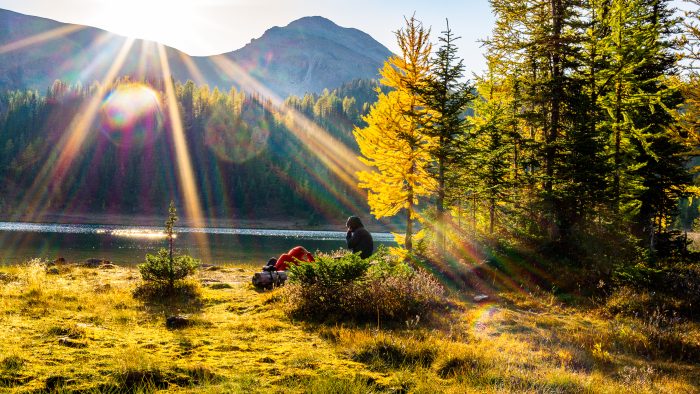 Hiking and weight. An inevitable connection. A balancing act between luxury items and backpack weight. Light is fast, Ultra-light even faster. At least in theory.
Hiking and weight. An inevitable connection. A balancing act between luxury items and backpack weight. Light is fast, Ultra-light even faster. At least in theory.
In the past
During my backpacking “career”, I had a wide range of packs and weights. From a 65L monster á la Cheryl Strayed fully packed with 10 days of food in Sweden, to my 20L Trailrunning Vest with around 6kg for my 5-day fastpacking trip on the Peaks of the Balkans. Of course, gear and clothes are always connected to where you are hiking. My Pacific Crest Trail adventure 2025 will not only be the very first real long hike for me, but I´m using this opportunity to go ultra-light FOR THE FIRST TIME.
I made my first dream ultra-light gear spreadsheet in 2011, before getting my first pieces of hiking gear for my first multi-day hike in 2013. From the start, I was always fascinated by reliable technical equipment and to increase the discomfort of thru hiking by reducing everything to a minimum.
My first gear was almost exclusively from Decathlon. For those who do not know Decathlon, it is a French sporting goods retailer, which produces under private labels in every sport for an entrance price range. As a student, I needed to watch on my budget, and the big brands were definitely way out of scope. And to be honest, I´m still buying at Decathlon. Of course, it’s not the highest quality, but especially when you are new to certain sports, you can get basic equipment there and upgrade later, as you need. The Decathlon gear stands its ground and the R&D team is doing a fantastic job equipping their gear with very thought-through features.
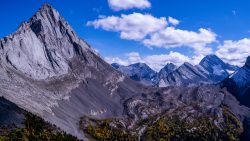 To be said, you can get good gear for reasonable prices. With almost low budget, I could count on my gear even in cold, wind, and rain and used my first equipment almost to the maximum, partly until they fell apart.
To be said, you can get good gear for reasonable prices. With almost low budget, I could count on my gear even in cold, wind, and rain and used my first equipment almost to the maximum, partly until they fell apart.
As I´m doing this hiking stuff for a bit, I upgraded slowly item by item. For every longer hike something new. Trailrunning helped me to get into the technical component of the gear, too. So, what is my gear about? Let´s start the nerd talk… NOT 😀
I won´t go too specific into brands and all the details. This post shouldn´t be a gear check. I rather want to describe why my gear is composed as it is. Still hard to keep this post short, I can talk/write forever about this. #gearnerd 😀
Tent:
The moment I decided to go to Canada, I knew that I´d need some new and upgraded gear as most of my old stuff was totally worn out and thus, on the limit of its durability. The first item was my tent, my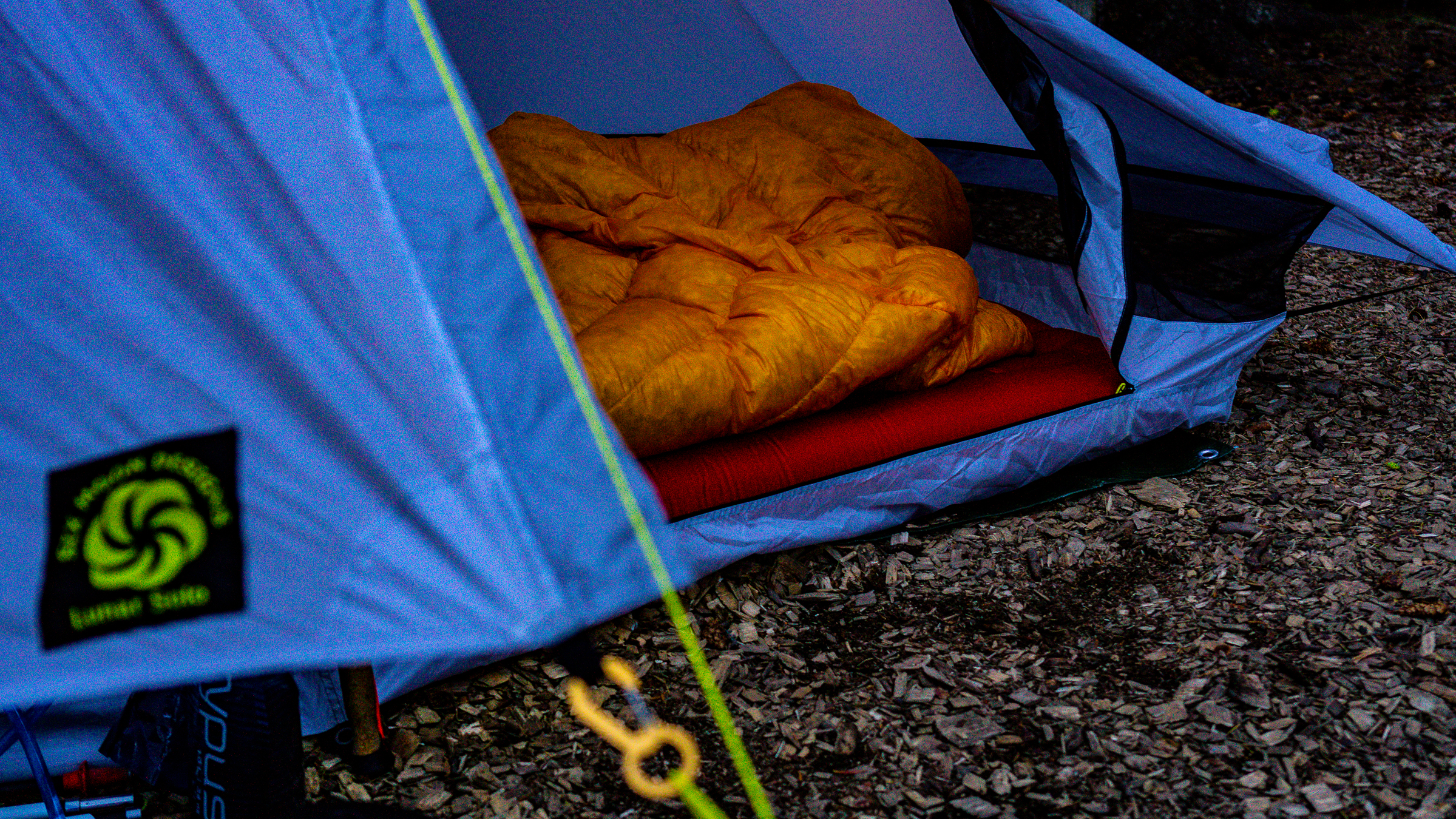 home, shelter, and safe place when I´m hiking. I decided on a pyramid tent (Lunar Solo from Six Moons Design) that I can set up with my trekking pole to save weight. It´s very minimalistic but offers all the space I need. I can sit in it, have enough space to get my pack inside and the ventilation is great. The entrance does not go down to the floor so you can look outside at ground level every moment. Great for restless nights, fearfully checking surroundings every time you “hear something” 😀
home, shelter, and safe place when I´m hiking. I decided on a pyramid tent (Lunar Solo from Six Moons Design) that I can set up with my trekking pole to save weight. It´s very minimalistic but offers all the space I need. I can sit in it, have enough space to get my pack inside and the ventilation is great. The entrance does not go down to the floor so you can look outside at ground level every moment. Great for restless nights, fearfully checking surroundings every time you “hear something” 😀
I´m very happy with that choice and tested this tent on several hikes in Canada. I´m very excited about my first rainy night in the tent as I sealed the seams myself, so time will tell if it was a neat job 😉
Sleeping Bag:
Since I regularly slept in sleeping bags, I hated the mummy shape. I´m an active sleeper and woke up multiple times at night. Twisted, the hood somewhere, but definitely not where it is supposed to be. Additionally, I sleep on my belly with my arms under my head counteracting the main anatomical function of a sleeping bag. For Canada, and after some intense research, I decided to try out Quilts. Quilts are more like blankets without a hood and open at the back, only closed in the foot box at the lower end. At the backside, you can attach straps around your sleeping pad to integrate it into your insulation circle. That is why it is important to have a good R-value (index of how good the insulation is) on your pad.
This wa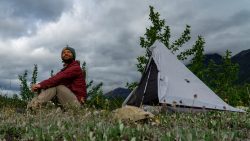 y, your quilt is more like a blanket and you can move more easily in the bag not being able to twist anything. I like to keep the bottom a bit loose to let some air inside or get a foot out, if it is too warm. Yes, I´m mostly warm when I´m sleeping and even without a hood I wear at -5°C outside only shorts and a shirt for sleeping. Of course, something on my head to compensate for the missing hood. And on cold nights maybe a long sleeve for keeping the arms a bit warmer, too. But so far, I love this upgrade and it definitely improves the quality of my sleep.
y, your quilt is more like a blanket and you can move more easily in the bag not being able to twist anything. I like to keep the bottom a bit loose to let some air inside or get a foot out, if it is too warm. Yes, I´m mostly warm when I´m sleeping and even without a hood I wear at -5°C outside only shorts and a shirt for sleeping. Of course, something on my head to compensate for the missing hood. And on cold nights maybe a long sleeve for keeping the arms a bit warmer, too. But so far, I love this upgrade and it definitely improves the quality of my sleep.
I decided on the Sea to Summit Ember III quilt, the perfect choice with only 750g and an awesome warmth/weight ratio, toasty warm even at -°C.#
Sleeping pad:
Maybe the only item in my pack that could be lighter. Maybe, I will exchange it during the hike if I want to cut weight. It´s the Big Agnes Rapide SL in wide. And it’s a super comfy bed with the outer tubes a bit higher to prevent rolling off the pad during the night. 650g and probably one of the best pads on the market. But yeah, there are lighter ones on the market. But for the moment I´m very happy with that.
Phew, it´s getting quite a long post already. Let´s shorten this up now a bit.
More into my philosophy:
Overall, ultra-light means to minimize your belongings on the trail. Or, to make them as light as possible. Luckily, due to my Trail running history, I already got some light stuff. But in preps for the PCT, I reduced a fair amount of weight on the following items:
– Stove (70g), Pot (70g), Knife (38g), Headlamp (38g), Backpack (800g)
– Shoes (Trailrunners instead of heavy and stiff hiking boots)
You m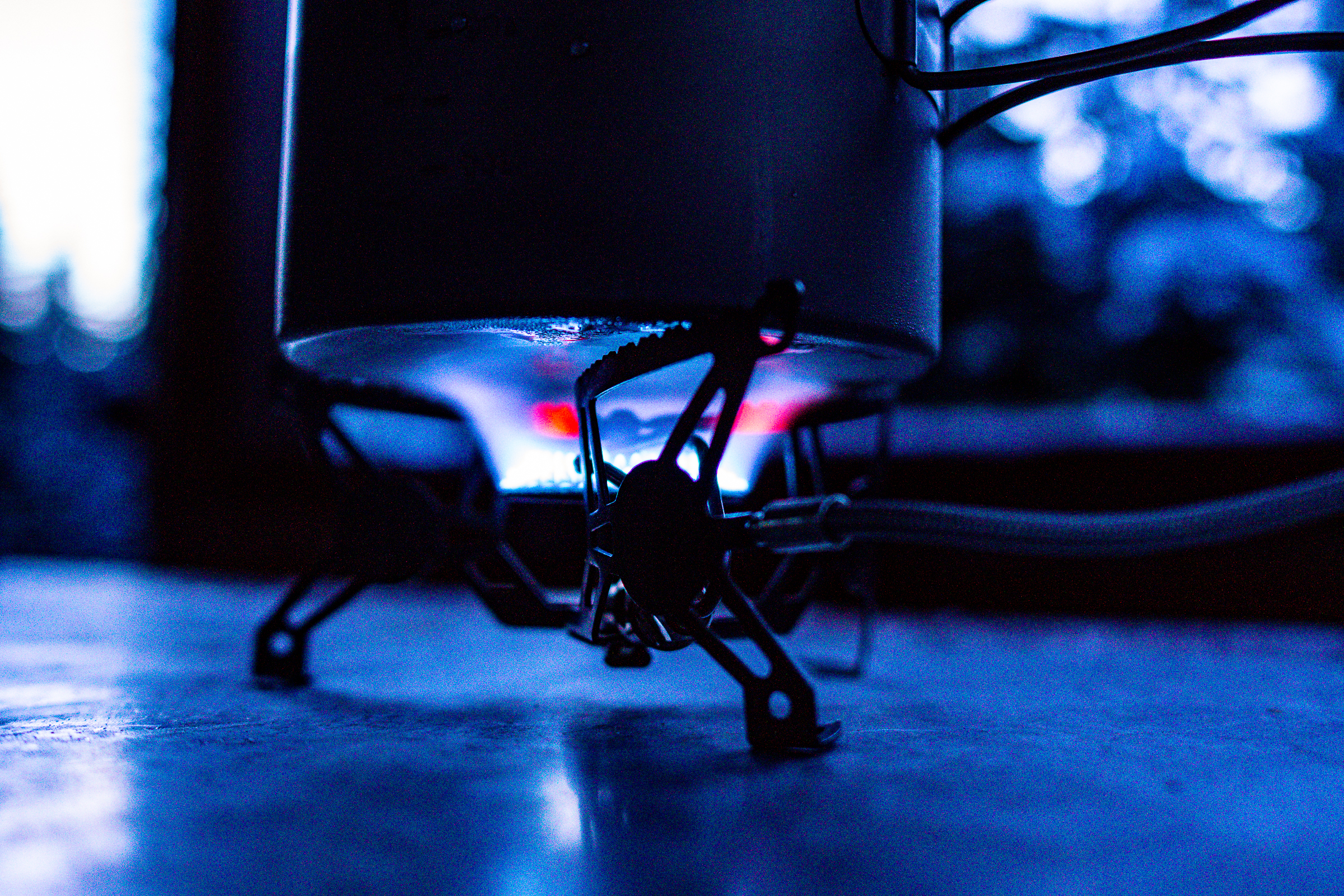 ay think I´m crazy counting grams, but ultra-light is a rabbit hole. Once you´ve entered it, you see how “ridiculous” heavy your pack is. Then you start thinking 😉
ay think I´m crazy counting grams, but ultra-light is a rabbit hole. Once you´ve entered it, you see how “ridiculous” heavy your pack is. Then you start thinking 😉
Eventually, you conclude, that weight reduction ends at some point. Therefore, elimination is the most effective way to reduce weight, right. 😀
Knowing, that I´ll definitely reduce the luxury I had on other hikes and that I will not be as prepared for all the “what-ifs” as on previous hikes.vOk, in detail: What will I eliminate for my Pacific Crest Trail hike what usually would be in my pack on longer hikes?
– Towel: If I need a towel to dry myself, it will be a shirt or my bandana. As I shower in towns only, I´ll assume I can get towels there.
– Camera: I started photography three years ago, and if I had a choice I´d carry my camera on every hike. But this is a dead-end. My Sony is definitely travel size, but: Camera, Tripod, Lenses, Batteries,… NO! I got a mobile with an excellent camera and that is it. A little Tripod will help me for sure 😉. An action cam is not planned yet, but this might be something I add later on.
– Camp Shoes: The amazing feeling of a different pair of shoes after one long day of hiking: Priceless, and sometimes handy for river crossings, too. And I think I´ll miss camp shoes the most. But, I´ll start without them. I think I will get used to that. If not, I can always consider getting some later on. The hike is long enough for adapting gear, but the 300g I wanted to cut.
– Spare Clothes: Yes, my clothes will be dirty and stinky super quickly, but you know what? Carrying kg of spare clothes will not make it better, because they´ll be stinky and dirty soon, too. So, I´ll make the few I have even more stinky and dirty :D. I almost got everything I´ll take on the trail in Merino and this cotton is amazing and will do great for this purpose. An overview of what I take with me:
-
- On body: Sun Hoodie, Shorts, Underwear, Socks
- In Pack: Spare/sleep shirt, Spare shorts, Spare underwear/sleep bottoms, Spare Socks, Rain Jacket and Pants, Puff Jacket, Beanie, Bandana, Gloves, and maybe a Fleece for the High-Alpine sections.
That´s it. And it even can get more minimalistic, but spare clothes for the night are a luxury I want to have, and (for now) I think, I´ll gladly carry that extra weight. In the end, it is a safety aspect, too, and will definitely adapt when the weather changes.
What else?
Apart from that, you try to reduce the weight of everything possible. To carry only the amount you think you need (even for emergencies). Better having e.g. painkillers, supplements, toothpaste, sunscreen, etc. in every resupply box to carry an amount you never use up. Here, logistics become a crucial and interesting part.
Don´t get me wrong. I still want to and will be prepared for what-ifs, and I´ll not go on the lowest minimum. The idea of not relying on that many luxury items appeals to me in a way I´ll become more comfortable with discomfort, which is a desired “side-quest” of this adventure. Maybe I´ll find new limits here, exciting times ahead 😉
I hope you enjoyed my “little” intro to my ultra-light transformation. Please leave a comment.
59 days left – wow!
Thanks for reading,
Simon
This website contains affiliate links, which means The Trek may receive a percentage of any product or service you purchase using the links in the articles or advertisements. The buyer pays the same price as they would otherwise, and your purchase helps to support The Trek's ongoing goal to serve you quality backpacking advice and information. Thanks for your support!
To learn more, please visit the About This Site page.

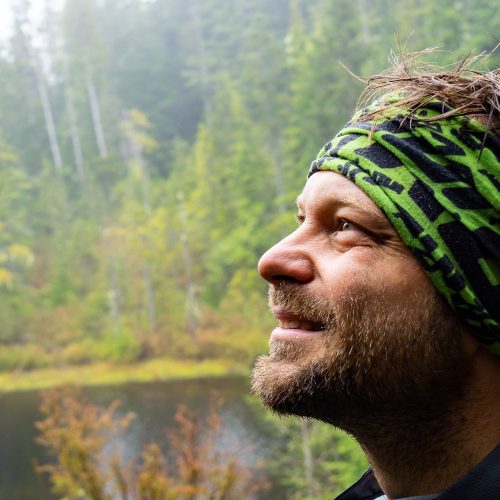 ">
">



Comments 4
Hi Simon
I absolutely love your approach, baby steps rather than going all in and over spending, great explanation too. It can be super overwhelming and expensive unnecessarily.
I’ve just ditched my sturdy 36L Dueter rucksack which I love but at almost 2kg it’s nuts. No idea what to get to replace it as yet. I’m training to walk across the world Canterbury England to Canterbury New Zealand and Africa to raise awareness about domestic violence violence and sexual abuse and show everyone any dream is possible. So I’m going through lots of lessons along the preparation journey.
Thank you for sharing your journey so far. I’ve subscribed so I can follow your exciting journey and related experiences.
Humble gratitude
Helen-Maree
you.can.go.far
Thanks so much for your feedback 🙂
Yeah sometimes you need to ditch what you love.
Wow huge respect for your upcoming adventure ❤️
This is a great write up! I think you’ve got the right approach. Everything you’ve decided to go without, many hikers before you have gone without too. You’ll sacrifice some creature comforts, but your body will thank you 🙂
Thanks Jess! Gonna be interesting how the perception is changing on trail 😉